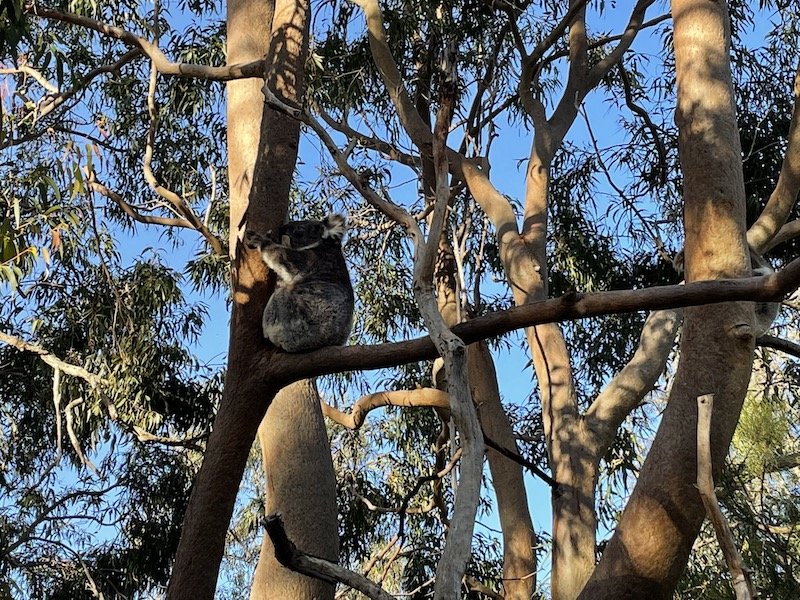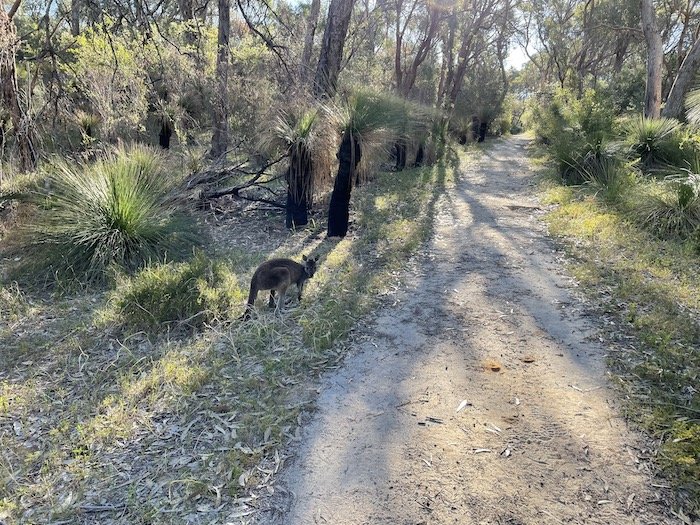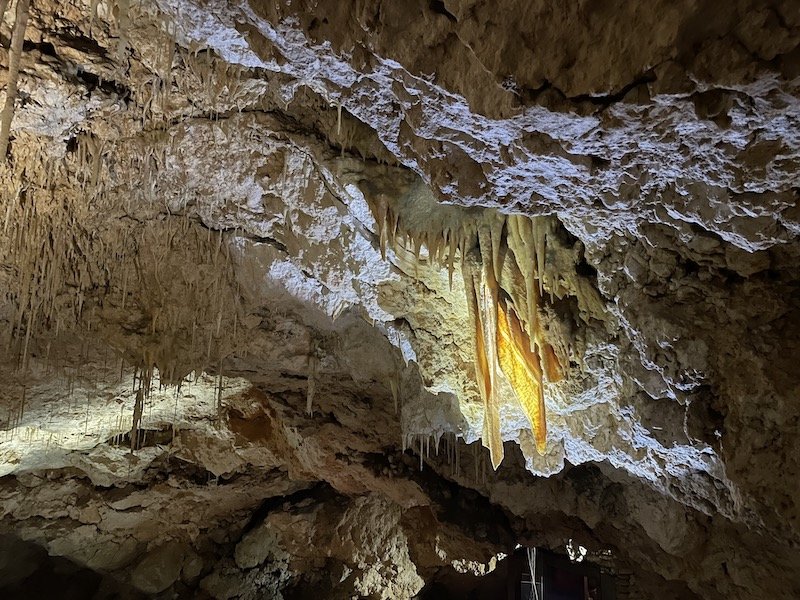Pinnacles, Yanchep and Perth
Our decision to turn around was based on the fact that we wanted to be within a reasonable distance of the Victorian boarder by mid-November. My sister-in-law, Roberta, would be celebrating her 80th birthday on the 27th and, although we were not confident that borders would reopen, we didn’t want to be 5,000km away if they were. Also, North of Coral Bay was starting to get really hot, so travelling back to Melbourne via a Northern route was not an option as we could have hit temperatures of over 40C.
Before we set off from the U.K, and all the way along our journey, we have received recommendations of amazing places that we ‘really must see’. With the limited time we have, the temptation to blast around and cram in as much as possible is very strong and we have certainly succumbed to this self-imposed pressure and have covered considerable distances. All this driving is feeling pretty hypocritical; I’d describe myself as an environmental activist but here we are, driving a 4.5l diesel 4WD towing a caravan that, combined, have a fuel consumption of around 15litres/100km, or just over 18mpg for the Brits. We are not running and heating a home as well, but this is still far more impactful than we intended. Life is full of compromise and, as we especially wanted to get to Melbourne for Roberta’s birthday, we chose to cover even more ground before changing how we travel. So stay tuned for updates on the changes we make.
The Pinnacles Desert, Western Australia
Around three hours drive north of Perth is the Nambung National Park, the traditional home of the Nyoongar people. Within the park is the Pinnacles Desert which gets its name from the thousands of eerie narrow stones that stand like some sort of socially distanced petrified audience. These natural limestone structures, ranging in hight from about 40cm to over 5m tall, rise up from bright yellow sand and cover approximately around 190 hectares in amongst paler sand dunes.
Aboriginal legend tells of young men who wandered into this sacred place reserved for women. The gods punished them by burying them alive, as they begged forgiveness, they raised their weapons to the skies and these turned into the pinnacles of stone. There are other geological explanations for how the stones were formed and a third which suggests a bit of both but the jury remains out on which is the most likely. I’m sticking with the wandering young men theory as this conjures the best imagery. I can picture a place, sacred for women, where ‘women’s business’, as Aborigines called it, took place. A place where women gathered, held ceremonies, foraged for food together and gave birth; certainly a place worth protecting.
We heard there was a colony of koalas in Yanchep National Park on the outer reaches of Perth, which are easy to see from a boardwalk viewing area so we booked into the delightful Henry White Oval campground within the park. Before coming to WA, we assumed that koalas could be found in all eucalyptus forests but not so, evidently they are not native to most areas in WA and this colony is really on holiday from Perth Zoo! They live in an area that’s not enclosed but they are provided with a good supply of gum leaves to munch on so they don’t bother to stray. This koala was lovely to watch from about 3m away, others were harder to spot as they were snoozing high up in trees.
Koala on holiday from Perth Zoo at Yanchep National Park, Western Australia
A short walk from the campground through the bush is a grand old hotel that harks back to early colonial times with sweeping lawns fenced from the bush in an attempt to keep the roos out. The roos have other ideas spending every evening chomping on the hotel lawn providing a lovely exhibition of family life for terrace drinkers. The big male (boomer) was lounging around looking like the lord of all he surveyed. He was surrounded by females (flyers) and babies (joeys) who, in-between periods of munching, interacted with one another a bit like a mother and toddler group; I wondered what they were talking about and had an Aussie female voice in my head saying ‘look at that lazy bastard!’
Roo on his way to the hotel
Mob of roos
Boomer
On the day we left, we visited the Crystal Cave, the only one of the 1000 in Yanchep National Park that is open to the public. We got on the first guided tour of the day so there were only six people and no queue. There used to be natural water flow and lakes within the cave system and it is possible to see the earlier water levels were about 3m higher than the current water table. There are thought to be three main reasons for this fall; over extraction upstream for city water and agriculture, reduced rainfall in the area due to climate heating and an increase in ground cover plants due to changes in bush management. The latter both uses water and creates more leaf litter leading to less water reaching the water table although this aspect is considered a minor contributing factor compared with the first two. Consequently, the Park Authorities pump water into lined pools to give visitors an idea of what the cave would have looked like when it was first discovered. The name Crystal Cave comes from the glistening appearance the moisture on the ceiling gave, however, as it’s now much dryer, this is less pronounced, but beautiful nevertheless.
Crystal Cave, Yanchep National Park, Western Australia
In Perth we checked into the very swanky Karrinyup Waters Resort caravan park, complete with three pools, a bar, restaurant and a lake. As caravan parks go, it was very spacious with excellent facilities but, being a family park with several play areas and a jumping pillow, it was very noisy. The highlight of our stay was a visit from our Troopy touring legends, Jack and Megan from JMxploring who we have been following on YouTube for months as they did their big lap of Australia. Their positive, open approach as well as their honesty about the tricky times has been a delight to watch and their Troopy build videos have been inspirational. Unlike many other travellers who have hooked into the social media sponsorship stuff, these guys have chosen to reject almost all the multiple offers of kit in exchange for product endorsements they receive. Their authenticity in what they are doing is evident on their videos but even more so when we chat to them over a coffee under our awning. Picking over the inside of their Troopy that they have been living in full time for months and discussing the pros and cons of their build helped us arrive at the conclusion that we really do want to shrink our living space even further.
Inside Jack and Megan’s Troopy
Jack and Megan with us and our Troopys
Next time we travel to Southern WA before heading East again.








